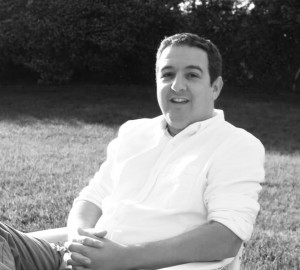Each summer we welcome two interns from the Preservation Institute Nantucket (PIN) to help with various tasks. One of these tasks is to guide weekly architectural walking tours of down town Main Street. The 2014 interns Sal Cumella and Briane Shane gave guided walking tours beginning in June and ending in August. Below, Sal Cumella answers five questions regarding his experience as a walking tour guide.
 1. How did you land the position as an NPT walking tour guide?
1. How did you land the position as an NPT walking tour guide?
I was made aware of the tour guide position from previous NPT interns. They told me about how much they enjoyed giving the tours and I thought it would be a great way to interact with people and Nantucket’s history.
2. What was your most memorable walking tour experience?
Tours with children were always the most memorable for me. Adults tend to be more restrained and might not ask questions for fear of sounding silly. Children often had the most honest and thought provoking questions.
3. Was there any common questions and/or misconceptions the tour groups had of Nantucket architecture or Nantucket in general?
The most common question by far was about the cobblestones on Main Street. There are many myths about where the stones came from and why. They are such a character defining feature of Main Street that everyone wants to know their story.
4. What did you find the most valuable or interesting item learned during your time as a walking tour guide?
One of the most valuable lessons I learned while giving NPT tours was how valuable the tours can be as an educational tool. The tour often would begin broader discussions of preservation, architecture, economics, and social issues. Nantucket makes an excellent classroom for talking about all of these issues.
5. If you could make sure each tour attendee left with one fact or important piece of information what would that be?
One of the things I would try to instill upon attendees was that Nantucket is such a special place because of its strong ties to its cultural heritage and its sense of place. This has been preserved because of efforts early on to maintain this heritage. I always challenged attendees to think about what cultural heritage resources they had in the towns they were from and how they were being promoted and protected.
*For more information on the seasonal walking tours click here


